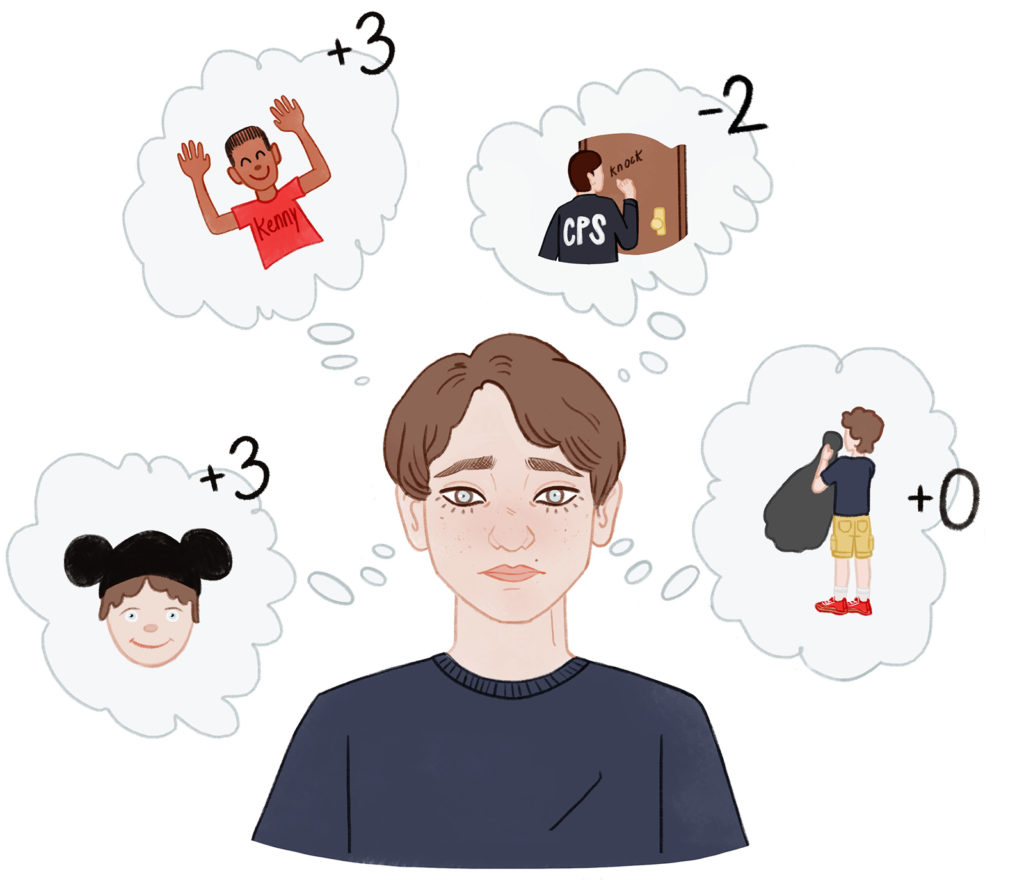





The Life Timeline vs. the Trauma Narrative(s) Copy
The therapist may choose whether to begin with the life timeline or trauma narrative(s). For children that have difficulty acknowledging their emotions or talking openly about the trauma, it may be helpful to start with the life timeline, to give them practice in providing an overview of challenging life events before focusing on specific traumatic experiences in greater detail.
The purpose of the life timeline is to map out the allostatic load—the accumulation of not only traumatic experiences, but all the child’s adversities, along with positive experiences that might offset difficulties and highlight child resilience.
Ask the child to recall every experience that they can, going back as far as they can remember until now, and choose what to include. We don’t need the full story for each event, a 2–3 sentence description of each included experience will suffice. Then have the child rate each event as negative, neutral, or positive on a scale of -3 to +3. This will paint a fuller picture. If necessary, be prepared to help the child develop the timeline by suggesting “anchoring” experiences, including significant life events such as moves, birthdays, the start of school, or family transitions (e.g., new siblings, parental separation).

While the life timeline looks at all the events, the trauma narrative(s) specifically focuses on an in-depth story of the traumatic experience(s). But these are not exclusive, the life timeline is meant to facilitate a cohesive narrative that incorporates all aspects of the child’s history.
The trauma narrative generally occurs over two sessions. It is important to be an active listener and—although challenging for therapists—not to intervene at this stage by offering interpretations or correcting cognitive distortions. Premature interventions may jeopardize the revelation of critical content. The therapist’s initial goal is to observe the event as the child experiences and understands it. The child gets to choose what to talk about while the therapist quietly observes patterns, gaps, emotional content, and potential cues. However, if the therapist notices possible avoidance, it is important to discuss this with the child and encourage them to talk about the event(s) causing current distress.
Ask the child to dictate the details of the experience(s) in the form of a story. Encourage them to speak in the present tense because it may help them recall feelings and thoughts with more saliency.
In Session 4, the therapist must identify and record any emotions (spoken or unspoken) and cognitive distortions—beliefs about the child, other people, or the world around them that develop out of a traumatic experience. Do not share with the child at this time. Also be attentive for potential cues and the whole arc of the story: are there any major gaps? Is there anything that doesn’t make sense in terms of timing or sequence?
Refer to CCT Manual Worksheet 6.2, “Feelings 1A Worksheet” (page 94) and Worksheet 6.3, “Feelings 1B Worksheet” (page 95)
The take-home assignment for Session 4 is Feelings Worksheet 1. We use the term ‘feelings’ over ‘emotions’ which may be a bit abstract for children. This worksheet facilitates the child connecting how these core trauma emotions/feelings are influencing their behavioral responses. There are two versions of this worksheet: Worksheet 1A is intended for those kids who already have insight into their feelings and are able to talk overtly about their traumatic experiences. Feelings Worksheet 1B is for kids who are more withdrawn or not currently acknowledging their emotions. It is up to the therapist to decide which worksheet is best for the individual child.
Later in Session 5, the therapist can go back and ask questions to clarify and expand details. For example, if the therapist notes that the child simply stated that they felt ‘bad,’ the emotion behind this can be clarified.
